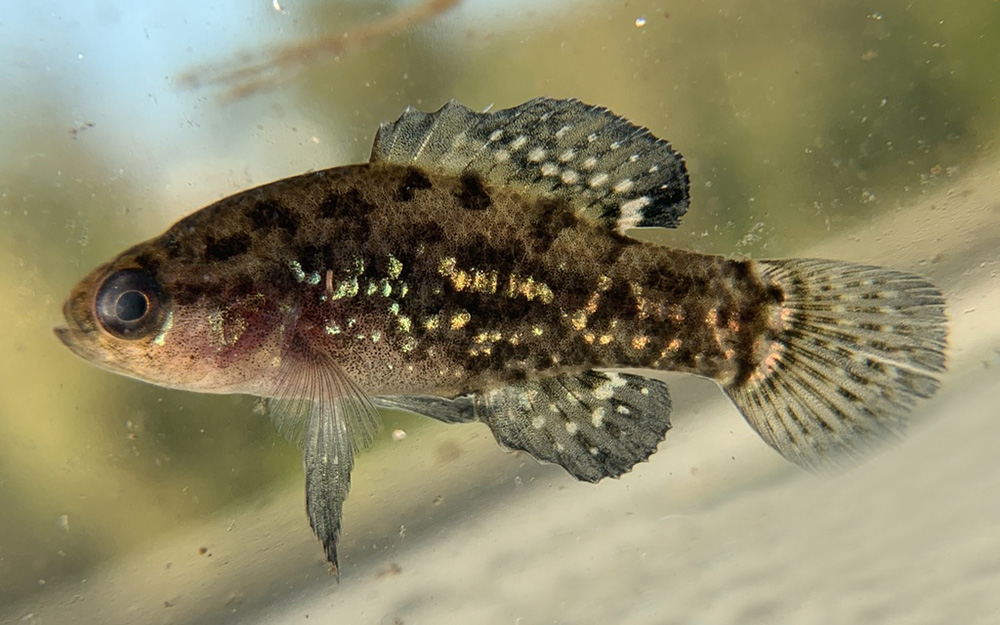Everglades pygmy sunfish
(Elassoma evergladei)

Classification
General data
Elassoma evergladei, or the Everglades pygmy sunfish, is a species of fish from the genus Elassoma (the pygmy sunfishes) that is endemic to North America.
Description
The fish can grow to a maximum length of 3.4 cm (in total length), and it generally grows to 2.3 cm (TL).
Scales are present at the top of its head. Its mouth is both small and oblique. The fish does not have a lateral line. A crescent-shaped area behind each eye may be gold or iridescent blue. It has dark lips. Egg count in the ovaries of females in captivity ranged from 115 to 500, increasing with the fishs size.
The fish has variable color and form. Its body is generally colored brown with darker spots. The fish has several rows of dark red spots on its dorsal and anal fins. Nonbreeding fish may have light streaks, mottling, or blotches. Females of the species in general are colored brown on their backs with mottled brown and cream/white coloring underneath, or they may be reddish brown. The females have no markings. Breeding males are colored black with iridescent blue spots. Males have black fins with or without brown spots. Male bodies may be black, brown, or dark green with blotches or spots. A few indistinct dark bars may be present on the male body. Males may have brassy or blue-green iridescent scales scattered across their bodies.
According to one source, males are dark black and have iridescent blue flecks, and females have a brown coloration.
Distribution and habitat
The Everyglades pygmy sunfish can be found in the United States from the end of Cape Fear River, North Carolina to Mobile Bay, Alabama. It may also be found from the south of Florida to the northern end of the Everglades. The fish has been found more often in the natural marshes rather than the constructed marshes of central Florida.
The fish lives in freshwater and demersal habitats at a pH range of 7.0 to 7.5 and a temperature range of 10 to 30 degrees Celsius. They reside in swamps, sphagnum bogs, sloughs with heavy vegetation, canals, overflow pools, ponds, lakes, and streams; generally over mud, silt, sand, limestone, or detritus. They exist in such areas where the current is slow and water levels fluctuate. They prefer shallow areas as well as areas of vegetation. The species tends to stay restricted to black water environments more than other species of the genus.











